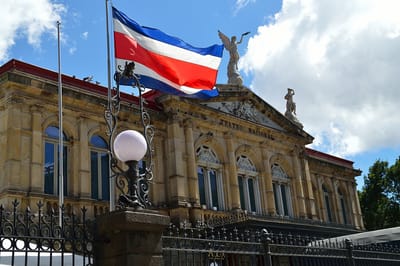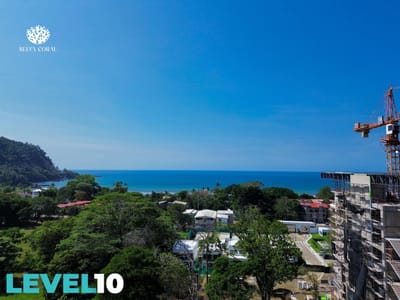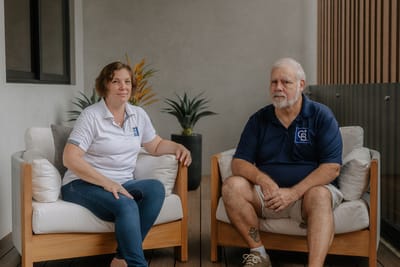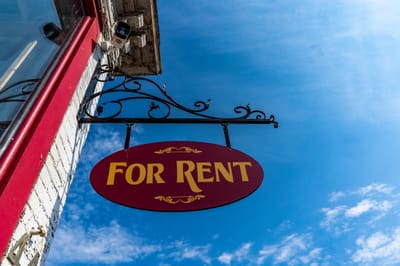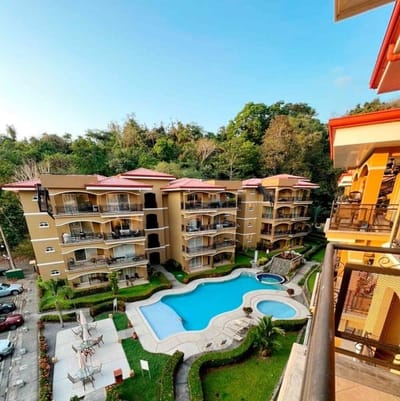Costa Rica has proposed new legislation aimed at regulating tourist visas more stringently to prevent indefinite stays and strengthen immigration control. learn more about what this means to you.
Read MoreCOLDWELL BANKER
JACO BEACH
FIND YOUR PERFECT SLICE OF PARADISE
About
It's been an adventure, since we spent a total of one week in Costa Rica before we decided to sell everything and move to paradise- and since we didn't speak more than a few words of Spanish. But we're here and we love it!
Our time here has been magical, we have made an a amazing (and international) group of friends. We are excited to share the knowledge and experience that we have gained with others who are interested in making the move or buying and investment property, here in Costa Rica.
We would love to help you find your slice of paradise.
Pura Vida!
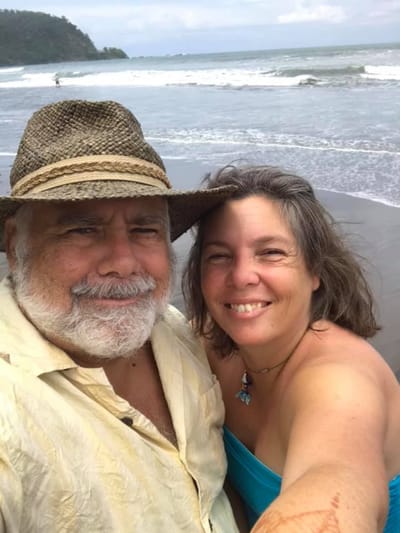

Featured Listings
Check out some of the most popular developments and gated communities here, let us know which appeal to you and we will find out what is currently available for purchase. Whether your dream home is a simple, worry-free condo near the beach, a stand-alone home in a gated community, or a villa on the hillside- we've got your perfect tropical property, and it's right here waiting.
Rentals and Property Management
Blog
A brand-new chapter is unfolding in Jacó with The Pearl, a stunning preconstruction development that is bringing new life to a once-abandoned property. Designed for modern luxury, The Pearl offers the perfect balance—close enough to enjoy the vibrant beachfront lifestyle, yet far enough from the hustle and bustle to provide a tranquil, private retreat. If you’ve ever dreamed of owning a luxury condo in Costa Rica, this is your chance to get in at preconstruction pricing—before values rise!
Read MoreIf you're wondering what all the new construction in Jaco will mean to your investment, this is the article for you!
Read MorePart 2 of our series on Becoming A Costa Rican Resident- Step-by-Step, we talk about what paperwork we will need to have before we can start the legal process. We also discuss the difference between a Notary and an Apostate, because many of these documents will need to be Apostilled.
Read MoreWe have just started out residency process and we are going to take you along with us for the entire process, so you have a bird's eye view and know what to expect!
Read MoreConfused about banking in Costa Rica? Wondering if you can get financing? Not sure how to transfer money in? This post is for you!
Read MoreUseful information about the Costa Rican Healthcare system, the CAJA, and health insurance.
Read MoreSo you are thinking about a life in Costa Rica, but you don't know whether to dive right in or rent. Here is some helpful information to help you make the right choice for you- and your budget!
Read MoreIf you're interested in buying a property in Costa Rica and putting it in the rental market, you need to read this first! Turning your new property into a rental property is easy and profitable, but you need to know what to expect.
Read MoreAn overview of Costa Rica's level of inclusion and diversity in the areas of gender equality, equality in the workplace, rights and freedoms, the disabled, healthcare, and education
Read MoreContact
- Jaco Walk, Jaco, Puntarenas Province, Jaco, Costa Rica
- +1-289-427-5690 - in Canada
- +506--8527-2954 - in CR- available on WhatsApp and Signal
- cg.coldwellbankerjacobeach@gmail.com
- We are always available.
If you have any questions or concerns, feel free to drop us a line and we will get back to you as soon as possible.
F.A.Q
How safe is Costa Rica?
There is a large gap in income, however between the average North American and the average Costa Rican, so property theft can occur, and you need to be aware of this. Don't leave expensive items laying around, or you may lose them.
In terms of purchasing a home, if you don't plan to be in residence year round, it is advisable to purchase in a gated community so that you can rest easy knowing your home and goods are being looked after.
What kind of rental income can I expect from my property?
- location
- size
- level of quality
- amenities
- security
Location
in general, people don't mind driving (or being driven) a distance from the airport for their accommodations, but they prefer to be near something exciting when they arrive. This could be a beach, a popular tourist attraction, shopping, amenities- whatever... they will choose accommodations based on what type of activities they enjoy.
Since most people travel to Costa Rica for water and wildlife, properties located near either will rent more often and provide a better income.
Size
Small properties, or ones with 1 or 2 bedrooms limit your options. Most modern families have 4 people, and blended families or groups can have quite a few more.
Small units will rent but larger units will rent more often. If you choose a small unit, you can combat this issue by making one bedroom a 'bunk room' with several beds in it.
Level of Quality
This one is obvious. Luxury properties demand higher rates so your per rental income will be higher. On the other hand, they won't be accessible to everyone. If you purchase a luxury rental property an you wish to make the highest possible income from it, be sure to market it as a luxury property, and be willing to provide some exclusive extras to draw in the right clientele. (Hint- CR has some amazing companies that offer private chef services and in home massages!)
Amenities
For some people, namely those who just want to get away from it all and relax, a shady place with a hammock and a good book is all they need. However, to maximize your rental income, a finding a property with amenities is a good idea. Things like beach access, a pool, tennis courts, spa services, walking trails, on-site gym will all increase your chances to book. Many developments and gated communities have great amenities on-site that your guests can take advantage of.
Security
Some people are wild and free and willing to explore new places on their own without worrying about their personal security. These are the type of people who will generally choose properties off-the-beaten-track, or glamping, or even hostels. However, if you plan to market to middle-aged travelers, families, or retirees, more often than not they will prefer some form of on-site security. Especially if they don't speak the language.
Properties with security of some form- fenced properties, gated communities or properties with staff on-site will make guests feel safer and will generally generate more income.
What's the weather like in Costa Rica?
Having said that, there are various geographical features that will cause some areas to be hotter, some wetter, and some stormier.
In general,
- Guanacaste is the hottest area in the country
- the Caribbean coast gets more severe weather (they get the remnants of the Caribbean hurricane season)
- The Pacific Coast is hot with strong ocean breezes
- the Central Valley gets the most consistent rain and cooler temperatures
- Monteverde- thanks to the cloud forest there, and the general elevation- is moderate year round with heavy rainfall during rainy season
- the Northern area of the country (above La Fortuna) is a watershed with plenty of rivers, marshes, and waterfowl. It is prone to flooding.
What actually happens most days is that the sun is out and the skies are blue in the morning so you are good to plan outdoor activities then. Around noon the clouds start to roll in. Sometime around 2 or 3 in the afternoon there will be a big downpour that may last an hour or two. It usually does off around supper and you get a couple hours of dry before bed. It generally rains quite a bit late in the evening and overnight.
Where is the best place to live in Costa Rica?
That will help us narrow the search significantly. Ask questions like:
- Do you plan to rent your property to generate an income, or live in most of the time?
- Do you have any accessibility/mobility issues?
- What kind of activities do you enjoy?
- How much space do you need?
- Do you enjoy an urban lifestyle?
- Do you prefer property with a yard? A pool?
- Are you willing to drive on steep terrain?
- Do you prefer to be near an airport? A Hospital?
- Do you want a home where yard and home maintenance is done for you?
- What kind of weather do you enjoy most?
If you prefer to be in the thick of the action with access to cultural events and shopping, prefer to live maintenance-free, and don't want to drive very far, then areas like Escazu or Liberia may suit you.
If you love to explore the wilderness, prefer wildlife over people, are devoted to the conservation and preservation of nature, are happy with the idea of a small home where you can throw open the windows and feel the ocean breezes- then Monteverde or the more remote areas like Drake Bay or the Osa Peninsula may be your idea of heaven.
What Kind of Closing Costs Should You Expect?
The calculations are straightforward and all parts of Costa Rica closing costs are calculated as a percentage of the property’s value.
We will demonstrate the calculations and costs based on a $300,000 home. (based on 2021 costs)
In Costa Rica, there are 4 four sub-categories which combine to make up your closing costs:
- Transfer Taxes
- National Registry & Documentary Stamps
- Legal Fees
- VAT/IVA
The value of your property can be determined using either the contracted sales price or the registered fiscal value and if the two values are different, the higher value is used.
1. Transfer Taxes (1.5%)
In Costa Rica, transfer taxes are calculated as 1.5% of either the property’s fiscal value OR the contract price, whichever is higher.
So, for our $300K Example, the Transfer Tax is $4,500.
2. National Registry + Documentary Stamps
The Costa Rican Government loves official stamps. They are required for almost every legal transaction that occurs, and when it comes to buying a home that is especially true.
To buy a home here you will need to pay six different fees/stamps:
- National Registry Stamps (0.5%)
- Agrarian Fees (0.15%)
- Fiscal Stamps (under $2)
- National Archive Fees (under $1)
- Costa Rican Bar Association Fees (under $100)
- Municipal Fees (0.2%)
Our $300,000 example home will cost you $2410. Here is a breakdown of each fee.
$1,500 (National Registry) + ¢190,500 (Agrarian) + ¢625 (Fiscal Stamps) + ¢20 (National Archives) + ¢5,000 (Bar Association) + ¢381,000 (Municipal Fees)
For clarification sake, the 577,145 colones (which is the national currency) is equivalent to between $1000-$1050 depending on the current exchange rate which fluctuates.
3. Legal Fees
To safely buy a home in Costa Rica, we recommend the use of a notary. In Costa Rica, only lawyers can become notaries and they have access to information that regular lawyers do not, belong to the Colegio de Abogados (Bar Assoc.) and must have been practicing law for a minimum of 2 years. Then they take additional training, and apply for an advanced degree in Notary and Registry Law. When buying a property as a foreigner, you want these guys on your side to ensure that everything is above board.
Only a notario público, or public notary, is legally empowered to transfer property. When looking for a real estate lawyer, look for a firm with a notary on staff.
Their fees are set on a sliding scale set by the government, which is:
- Up to 10,000,000 Colones (about $18,000): 2.0%
- 10,000,001 to 15,000,000 (Between the above and approx. $27,000): 1.50%
- 15,000,001 to 30,000,000 (between the above and approx. $53,000): 1.25%
- 30,000,001+( over $53,000): 1.00%
It means you need a calculator. Basically the more expensive your home, the higher the fees.
Based on our $300K Example the total would be approximately $3,300. It breaks down like this:
- ¢200,000 (first ¢10M)
- ¢75,000 (¢10M-¢15M)
- ¢187,500 (¢15M-¢30M)
- ¢1,600,000 (¢30M to about ¢190.5M, the equivalent to $300,000).
4. VAT/IVA (13% Value-Added Tax)
All legal fees and escrow services are subject to the 13% VAT (a.k.a IVA or I.V.A.). Its basically a sales tax similar to Canada's GST and is applied to almost everything in Costa Rica.
It is not directly calculated based on your property cost. It is however calculated as a percentage of your legal fees which ARE based on your property value. Your notary public does not keep these fees; they are remitted to the government on a monthly basis.
Based on our $300K Example you would be paying $429 (13% of $3,300).
So far, the closing costs for our example home of $300,000 adds up to about $10,639, but there may be a few more costs you should know about.
5. Additional Costs
Before the offer is finalized, you may wish to pay for due diligence, including topography studies, and title searches.
Depending on the terms of your sales offer, you may require an escrow service which will generally set you back less than $500, or a holding corporation (optional).
There is also the potential for legal fees incurred due to promissory notes, capital gains tax, and others.
As you can see, the fees that you will accrue aren't unreasonable... but they can be complicated, so it best to have an idea what to expect ahead of time so you are prepared.
How To Find Your Place- The 6 Regions of Costa Rica (part 1)
What that means for anyone looking to relocate is that you can decide what type of weather you want, what type of activities you’d like to do, and what sort of critters you’d like to see, and choose your destination to coincide with that. Easy peasy, right?
Well no. Lots of choices can make it hard to decide.
This post will help you to understand the different regions within Costa Rica, and what each one offers so that you can make an informed decision.
To be totally honest, to really experience Costa Rica and all that it has to offer could take a while, so if there is no rush it can be a good idea to rent in a few locations and get the feel for the area before you buy.
Wikipedia uses this map…
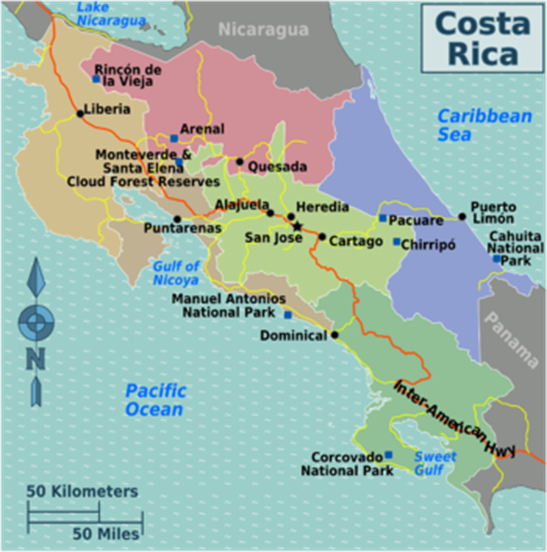 I’ve been here 6 years and I’m still learning.
I’ve been here 6 years and I’m still learning.The Regions of Costa Rica
First, there are 6 regions;- Northern Pacific- The northernmost region borders Nicaragua, close to Cárdenas which is just south of Lake Nicaragua. It stretches along the Pacific coast to Mal Pais which is the southernmost point of the Nicoya Peninsula and includes Monteverde. Guanacaste, located within this region is perhaps the best-known tourist destination, and is home to many expats.
- Northern or Northern Lowlands- Located in the center of the country, the Northern Region also borders on Nicaragua and includes the areas around the Rincon de la Vieja Volcano and the Arenal Volcano near La Fortuna. This is a very popular tourist destination, and as such attracts many expats, some of whom choose to settle in the area.
- Caribbean- this area includes the entire Caribbean coast along the Atlantic Ocean from Nicaragua in the north to Panama in the south. Weather patterns here differ greatly from those on the Pacific side.
- Central Valley- In the middle of the county and to the South of the Lowlands, the Central Valley is a lush area surrounded by mountains. It is also home to the capital city of San Jose, and somewhat surprisingly, many of the coffee and orange plantations as well.
- Central Pacific- Running along the Pacific Coast from the top of the Gulf of Nicoya to Dominical the Central Pacific is home to some of the best sport fishing and surfing in the world. It is a popular tourist destination, and home to a large and thriving expat community.
- South Pacific- Starting at Dominical, the south pacific region runs along the coast to the end of the Osa Peninsula and the Panamanian border. It includes Cocos Island which is the geographical southernmost point of Costa Rica. On the mainland, Pavones is known as the ‘end of the road,’ literally. Everything past Pavones is wilderness which makes it a popular area for naturalists. It is however, sparsely populated and without infrastructure in many areas.
What I am going to do, is break it down based on what the area is most known for, must-see destinations in each area, how easy/hard it is to get there, and any other fun facts that I come across.
1. Northern Pacific Region
The Northern Pacific is a large area with a very diverse range of climates. Within its borders, you can find rainforest, transitional forest, cloud forest, farmland, mountains, three active volcanoes, and tropical dry forest.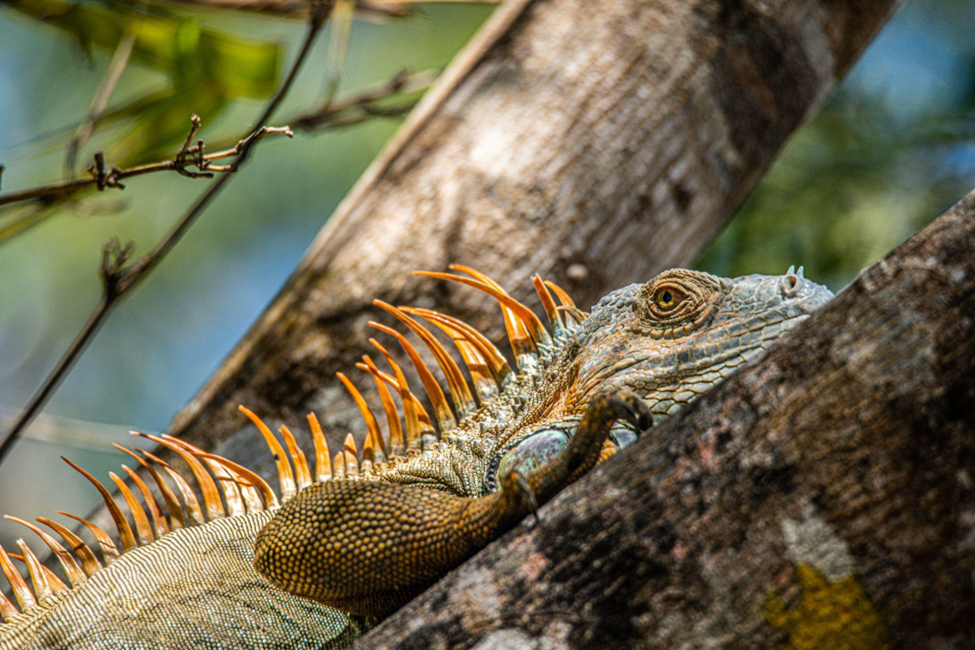 Guanacaste, which is located near the top of the region, is definitely the driest part of the country. In fact, during certain times of year, they’ll get no rain for months on end, making it a great place for outdoor excursions. Those who don't enjoy the heat, however, should avoid this area as it has the highest average temperatures in the country.
Guanacaste, which is located near the top of the region, is definitely the driest part of the country. In fact, during certain times of year, they’ll get no rain for months on end, making it a great place for outdoor excursions. Those who don't enjoy the heat, however, should avoid this area as it has the highest average temperatures in the country.Known for:
- All-inclusive resorts. Coco, Flamingo, and Tamarindo are all popular tourist destinations, with a very beachy, tropical feel. The hottest driest area is the northwest part of the region.
- The Blue Zone which is an area known for the longevity and health of its residents. Between the Pacific Ocean and the Gulf of Nicoya, you will find protected areas, both on and offshore, and natural wilderness.
- Cloud Forest. Inland, at Monteverde you will find forests that stretch into the clouds. Here the weather cools the farther up you climb, and the plant life changes a little with each elevation. It is a conservationist/naturalists dream location with lots to see and do.
Must see:
- The Tropical Dry Forest has a wide array of wildlife and draws birders from around the world; the dry landscape makes it much easier to view some of the rare birds. There are also 3 active volcanoes, Tenorio, Miravalles, and Orosi.
- Guanacaste is also known for whale- and dolphin-watching at certain times of the year and giant sea turtles at other times.
- Playa Tamarindo has some world-class surfing for anyone who loves to ride the waves.
Liberia International Airport is located in the region, and provides travelers easy access to much of the area. Some of the more remote areas require a few hours of travel through some rough terrain, requiring 4-wheel drive vehicles and strong nerves.
2. Northern/Northern Lowlands Region
The Northern Lowlands which is divided from Nicaragua on its northernmost edge by the San Juan River. With the exception of the Arenal Volcano, the area seldom rises above a few hundred feet.Known for:
Rolling Flatlands, marshes, and winding rivers make this region unique and highly desirable to many types of waterfowl, avid birders and kayakers.
Must see:
Everyone knows about Arenal, La Fortuna, the many tourist attractions of the southern part of the lowlands, including the natural hot springs. What is less commonly known is that the collection of rivers to the north, which feeds into the San Juan River, creates almost 300,000 acres of swamps and canals that stretch all the way to the Caribbean.
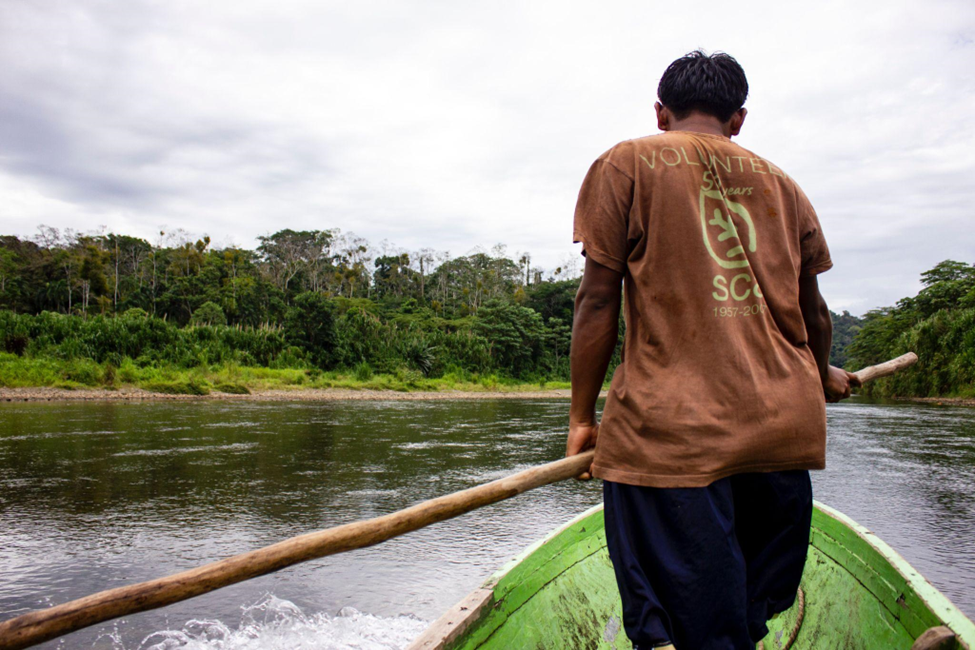 The Caño Negro and Barra del Colorado Wildlife Refuges, and the Tortuguero National Park on the Caribbean side provide wintering grounds for thousands of migrating birds every year,.
The Caño Negro and Barra del Colorado Wildlife Refuges, and the Tortuguero National Park on the Caribbean side provide wintering grounds for thousands of migrating birds every year,.The Rio Sarapiqui, Frio, San Carlos, and Toro rivers will provide hours of entertainment for adventurous kayakers, and are home to an amazingly biodiverse ecosystem.
Getting there:
The southern tip of the region lies between San Jose and Liberia, both of which have international airports. This makes it one of the easiest regions to access. Once in the region, you can also take advantage of the waterways for travel to the more remote areas.
Whether you enjoy the gorgeous vistas to be seen from the highest mountains, or the wide flat marshes split by the blue waters of the many rivers of the lowlands, Northern Costa Rica is a beautiful place, one with extreme changes in both elevation and topography. The area offers tourists plenty of variety and enjoyment, but living here can present unique challenges. Particularly during the rainy season when the low elevation makes the area prone to flooding.
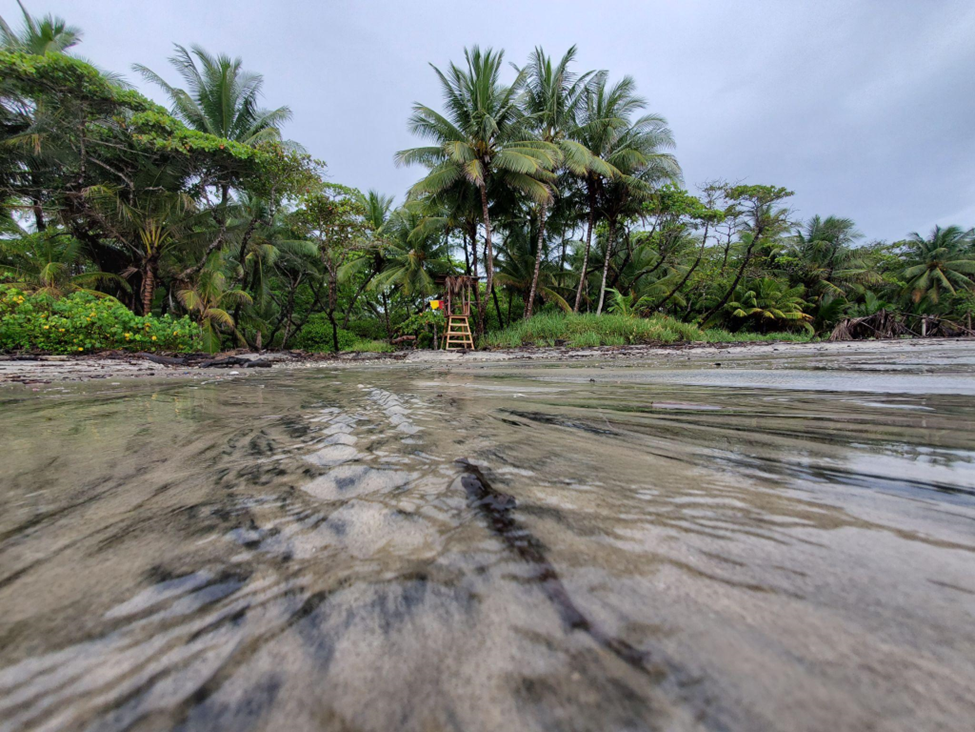 Stay tuned for Part 2 where we will discuss the Caribbean, Central Valley, Pacific, and Southern Pacific Regions!
Stay tuned for Part 2 where we will discuss the Caribbean, Central Valley, Pacific, and Southern Pacific Regions!How to Find Your Place- The 6 Regions of Costa Rica (part 1)
3. Caribbean
The Caribbean region stretches along the Cordillera Volcánica and Cordillera de Talamanca mountain ranges that run down the center of the country to the Atlantic Ocean. This region is quieter, more rustic, and boasts some gorgeous off-the-beaten-path destinations that will remind you of scenes from Robinson Crusoe. You will also find an interesting mix of cultural influences thanks to it's proximity to the Caribbean islands.Known for:
It's laid-back, low-key, authentic rural vibe. It is Pura Vida at its finest. Perhaps the most famous thing about this region is Tortuguero, and its national park, which protects and rescues thousands of sea turtles each year.
Tortuguero is also the best place on the Caribbean side to go whale-watching from December to March, when humpback whales which have made the journey from the North Atlantic, come to the area to their young.
Must see:
A trip to the Atlantic would be wasted without seeing sea turtles, so the best time to visit is in August when females lay their eggs in the sand, or in October/November when those eggs begin to hatch.
 Puerto Viejo on the southern end of the region is a popular destination for surfers and has a Caribbean/party vibe. Cahuita is said to have some of the best snorkeling in the country, with their coral reefs just offshore.
Puerto Viejo on the southern end of the region is a popular destination for surfers and has a Caribbean/party vibe. Cahuita is said to have some of the best snorkeling in the country, with their coral reefs just offshore.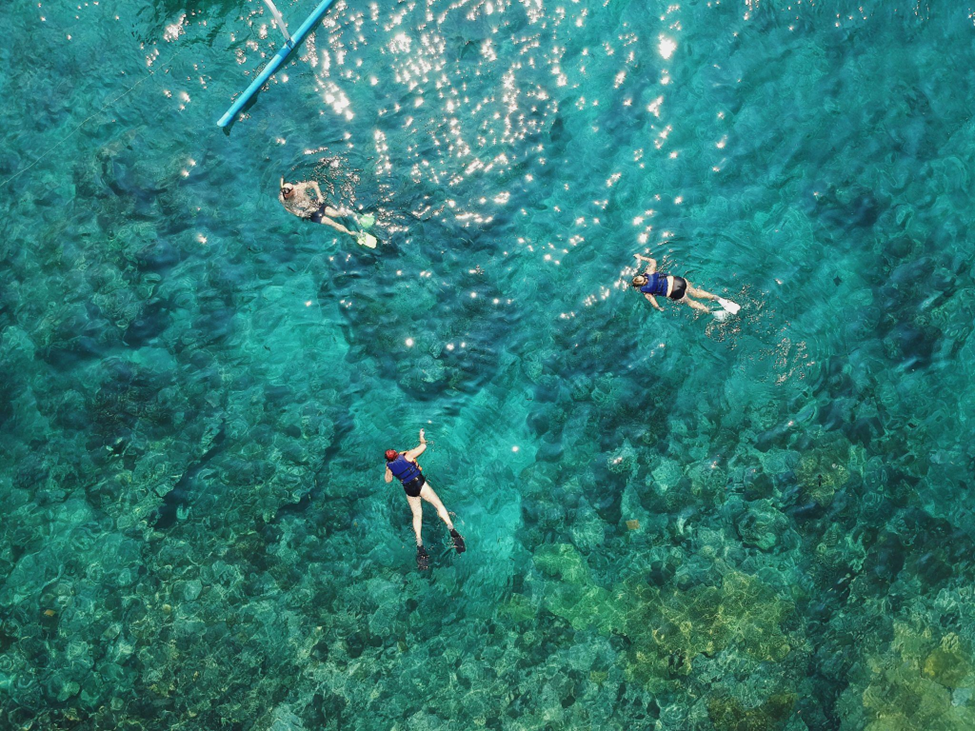 Chocolate lovers like me will enjoy a visit to the BriBri Tribe where you can see how authentic cacao beans have been harvested and processed for hundreds of years. Click here to learn all about it. It's also fascinating because only women are allowed to process this precious resource!
Chocolate lovers like me will enjoy a visit to the BriBri Tribe where you can see how authentic cacao beans have been harvested and processed for hundreds of years. Click here to learn all about it. It's also fascinating because only women are allowed to process this precious resource!Getting there:
Getting to the Caribbean side of the country requires a bit more work. There are no airports, and the commercial port at Limon doesn’t help the average traveler. Buying property in this area requires a willingness to be off-the-beaten-path and to have access to fewer modern amenities. It will appeal mostly to people who want to escape the rat-race and live a simple existence in nature.
4. Central Valley
The Central Valley is the home of Costa Rica’s capital city, San Jose, and about 60% of the country's population.Unlike North American cities which are often planned out in advance, in San Jose several smaller barrios grew together to form the city, encompassing farms and plantations as it went. While this gives the city an interesting feel it has also resulted in traffic issues and a lack of parking in certain areas.
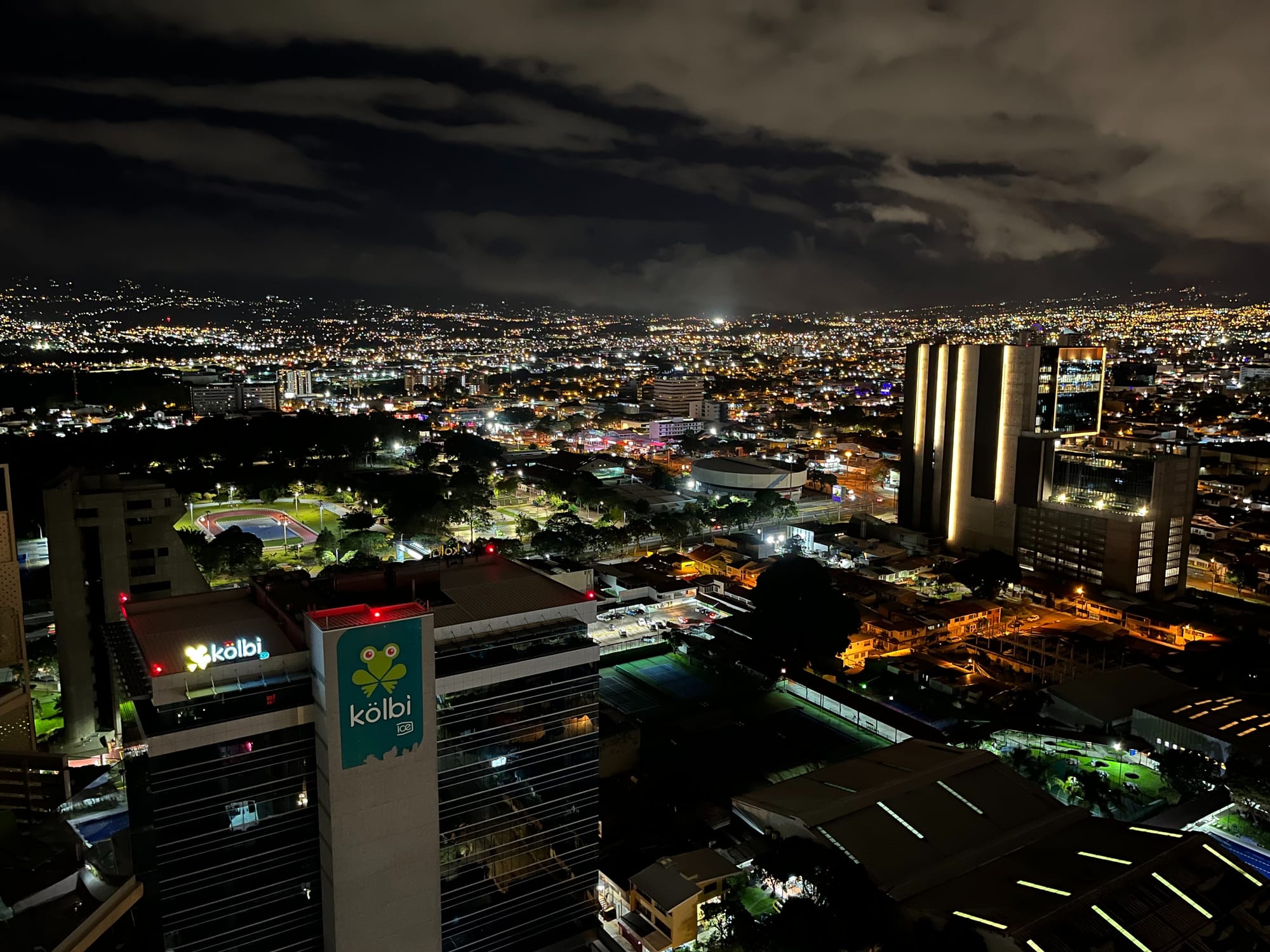 Expats tend to enjoy the newer and more modern areas of the city, like Escazu and Santa Ana or buy properties in Arenas which is outside the city but close enough to have easy access to shopping and amenities.
Expats tend to enjoy the newer and more modern areas of the city, like Escazu and Santa Ana or buy properties in Arenas which is outside the city but close enough to have easy access to shopping and amenities.Known for:
The Central Valley is known for its history and architecture, beautiful old buildings and monuments, museums and galleries, and artisan markets.
If you wander a little bit outside the city center, you will find lush green mountains with rows of coffee beans along the hillsides, right next to orange trees (the country has almost 5 million orange trees!) There are also cacao plantations and chocolate tours!
Must see:
If you explore the less commercial side of the region, you will find the Irazu volcano or small towns like Orosi or Turrialba (which have some architectural sites of historical importance) outside of the more urban areas.
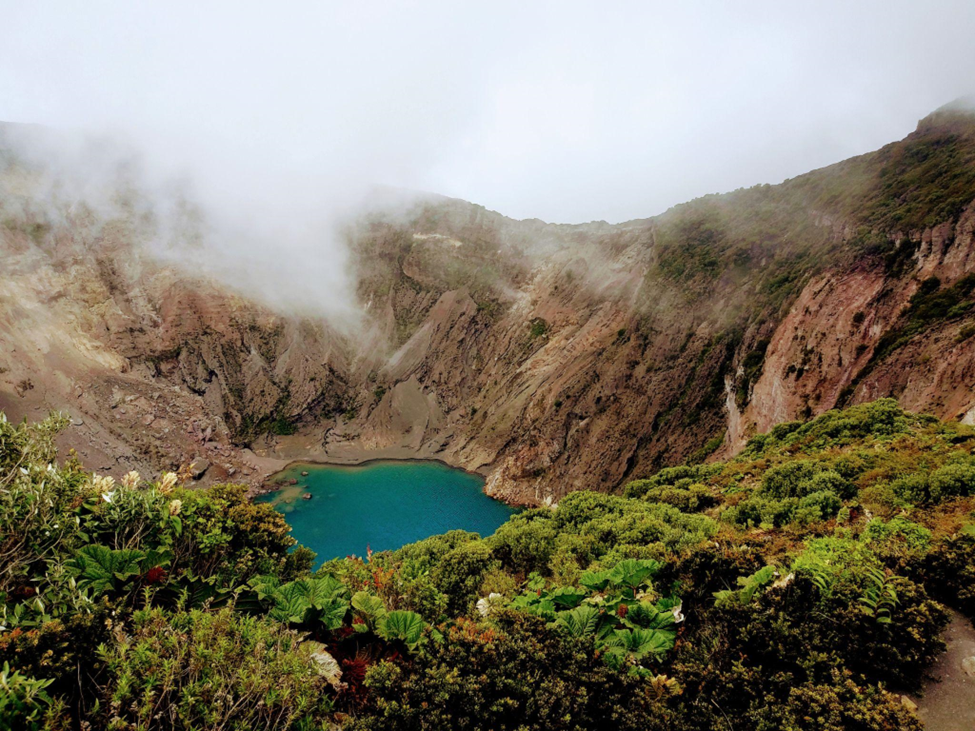 Hiking enthusiasts can enjoy the challenging trails of the Savegre River with its two beautiful waterfalls. There is also the Indian Reservation Quitirrisi where you can learn all about tobacco and the traditional production of cigars.
Hiking enthusiasts can enjoy the challenging trails of the Savegre River with its two beautiful waterfalls. There is also the Indian Reservation Quitirrisi where you can learn all about tobacco and the traditional production of cigars.Getting there:
The Santa Juanita International Airport will take you right into Alajuela, where you can hire a shuttle, take a bus or rent a car to get anywhere in the country. Getting into the city is easy and the country has an extensive public transportation system which will allow you to travel anywhere you wish easily from here.
5. Central Pacific
This is by far the smallest of the six regions. It does, however, pack a big punch thanks to its beautiful beaches and attractions like the world-famous Manuel Antonio National Park.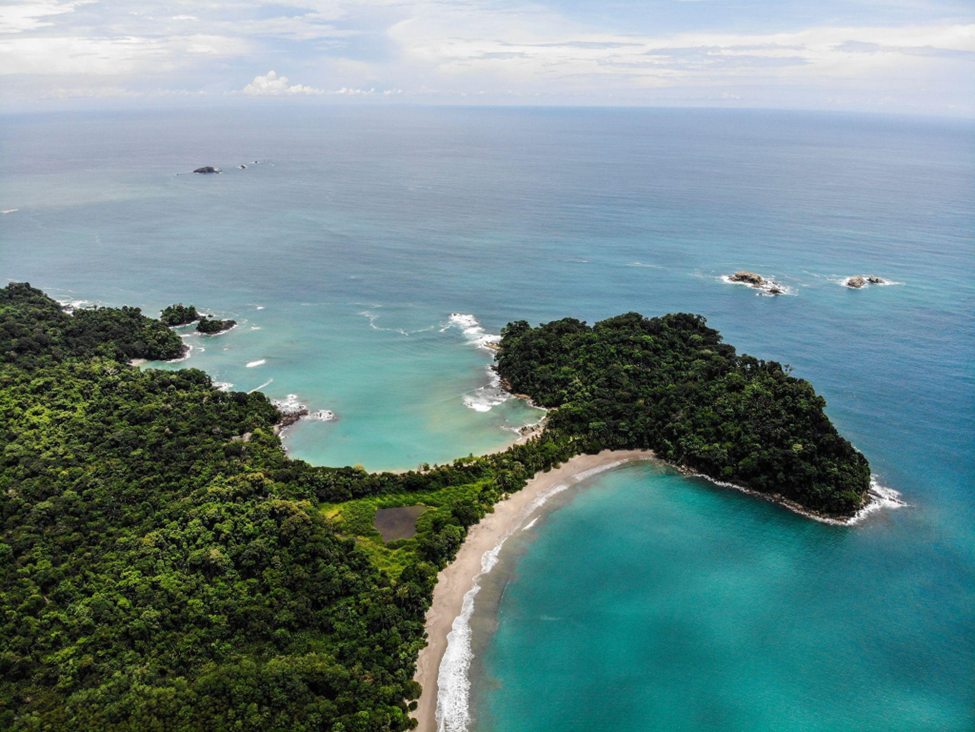
Known for:
The Manuel Antonio Park, near Quepos, is the most widely known attraction in the region because of its wide variety of easily accessible wildlife and its famous beach (Marino Ballena National Park), with its whale-tail-shape. The tail itself is only fully visible at low tide, but the area boasts some terrific snorkeling.
Between San Jose and Manuel Antonio, you will pass by lots of quaint little towns, and many are clustered around their own beautiful beaches.
One of the most popular of these is Herradura, home to the Los Suenos Resort, (the largest in the region which boasts both a golf course and marina for sportfishing enthusiasts). Some world record-breaking fish have been caught in these waters, and anyone who wants to try their hand at catching a marlin or sailfish can head out into the pacific with one of many tour companies.
Jaco- the largest town in the area, and a popular tourist destination is located a few kilometers to the south or Herradura. It and Hermosa are both popular with surfers, although Jaco's long sandy beach is better for sunbathing.
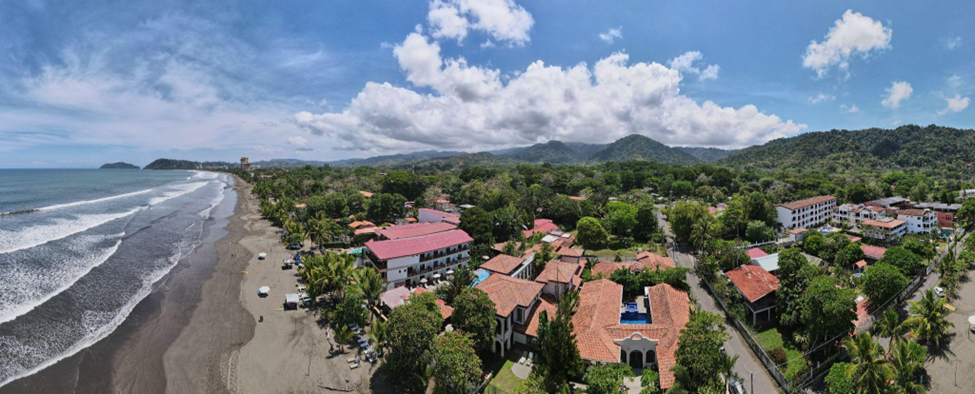 Most of the towns along the Pacific Coast have thriving expat communities thanks to these beaches, and the many other activities available in the area. Tourist areas like this are often more comfortable for English-speaking expats.
Most of the towns along the Pacific Coast have thriving expat communities thanks to these beaches, and the many other activities available in the area. Tourist areas like this are often more comfortable for English-speaking expats.Must see:
When it comes to the Central Pacific Region, beaches and water tend to be the biggest attraction. It is also home to the Carara National Park, and plenty of attractions for people who like adventure. You can enjoy lots of different types of tours on land or in the water. Jaco is also well known for its nightlife and casinos.
Regardless of what area of the central pacific you land in, there are warm breezes, soft sands, and palm trees to rival any tropical destination.
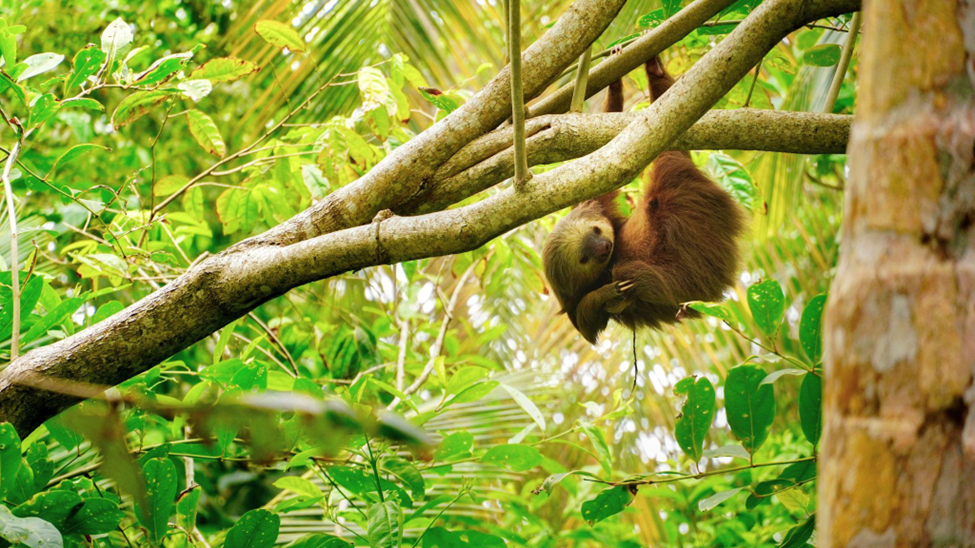 Getting there:
Getting there:Any trip to the CP region must start in one of the international airports. Jaco is about an hour and a half from San Jose, depending on the traffic, and Quepos another 2 hours past that. If you aren’t interested in a road trip, you can take a domestic flight from either Liberia or Santa Juanita to Quepos Domestic Airport. The flight from San Jose to Quepos is only about 25 minutes.
5. Southern Pacific
The SP region starts at Dominical and heads down into the wilderness of the Osa Peninsula and beyond.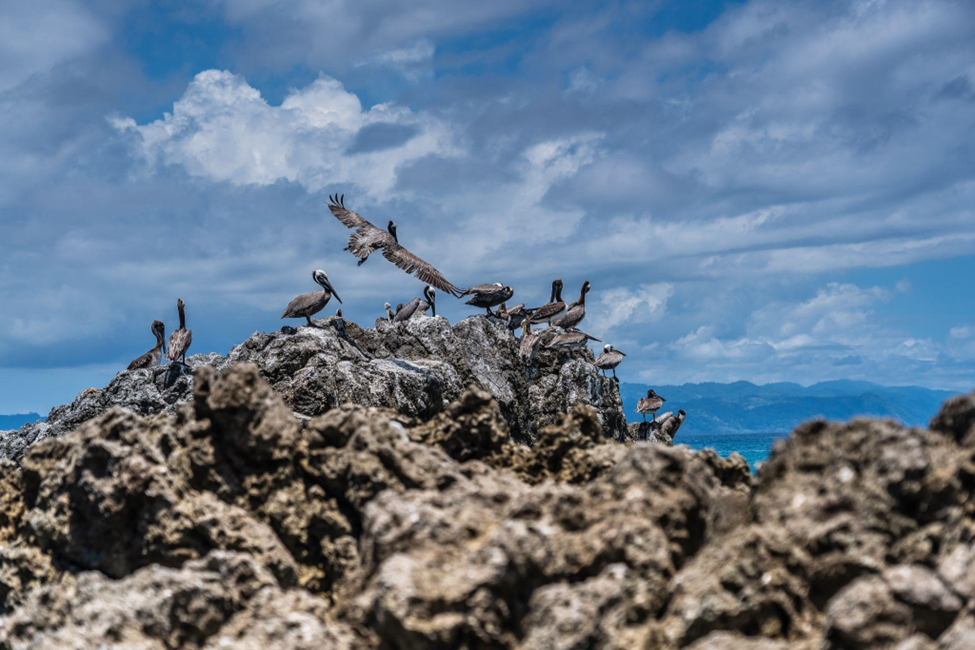 Known for:
Known for:Endless green wilderness and biodiversity which draws nature enthusiasts, birders, hikers, and more. It’s not an area for the faint of heart or the laid-back beach loungers. It’s an area for adventure and exercise because the SP is wild!
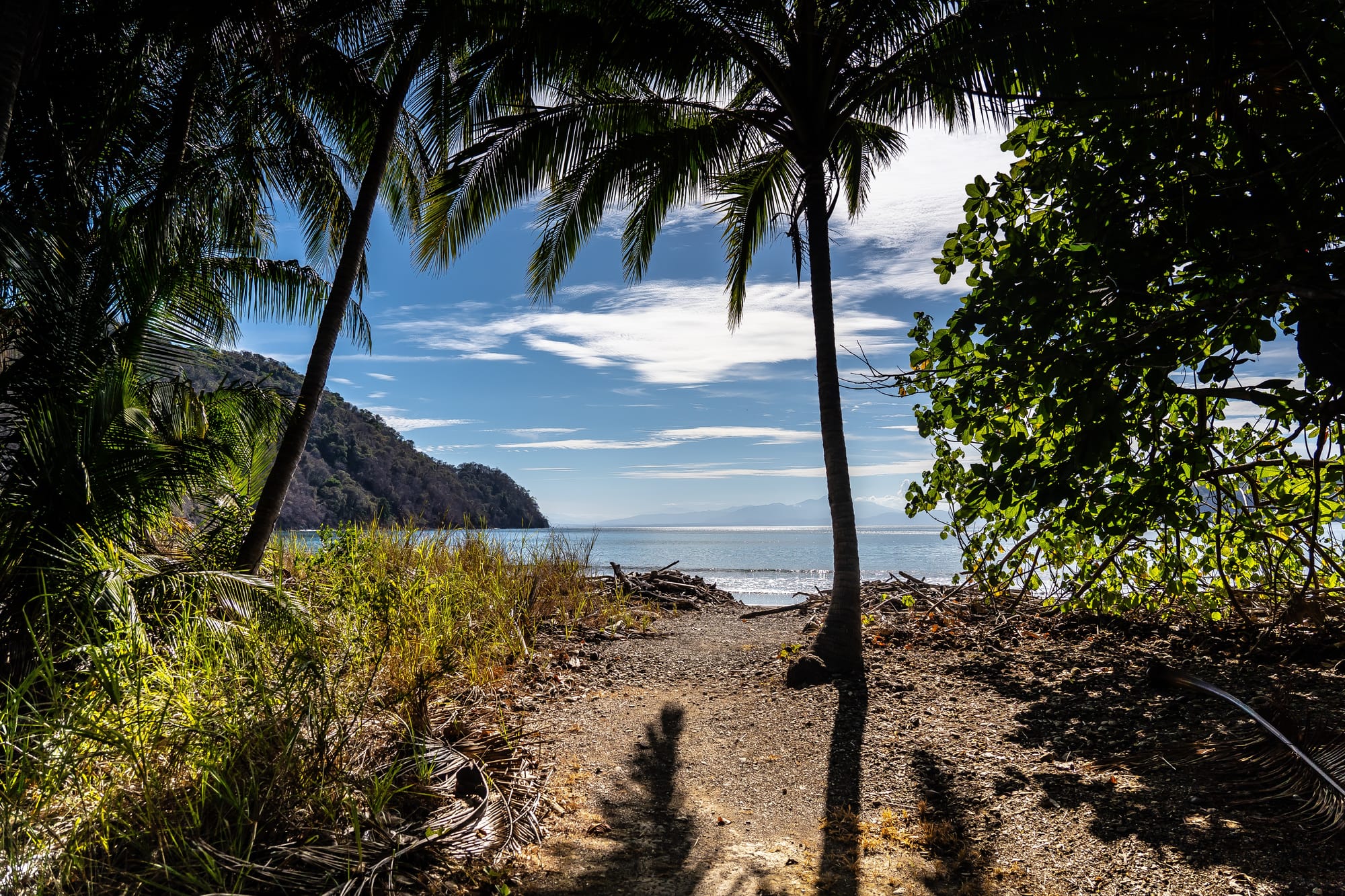 Must See:
Must See:Dominical is located at the northernmost point of the region and is famous for its surfing. Even hard-core thrill-seekers may meet their match with these ten-foot waves.
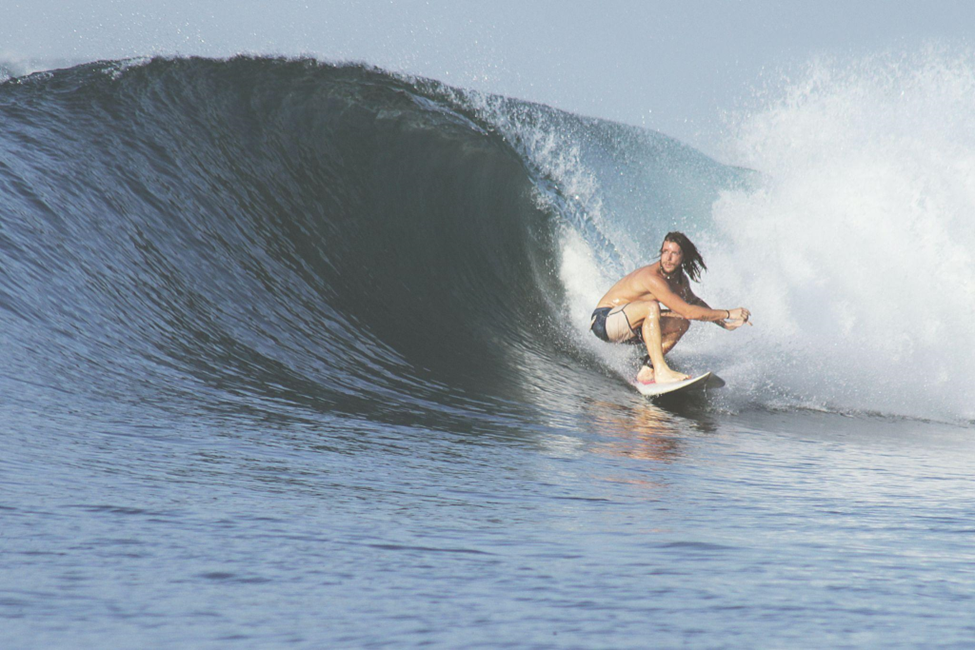 Drake Bay is home to the Corcovado National Park and also offers tourists a way to get to Cocos Island/Caño's Island which is a biological reserve and is known as the most renowned scuba diving destination in Costa Rica.
Drake Bay is home to the Corcovado National Park and also offers tourists a way to get to Cocos Island/Caño's Island which is a biological reserve and is known as the most renowned scuba diving destination in Costa Rica.A visit here requires a willingness to take the multiple-day dive boat out to explore those protected waters.
Ten km from Dominical you can find the Nauyaca Waterfalls where you can hike the 4 km trail, or enjoy one of their horseback tours to the falls with their 40-meter drop.
Getting there:
Driving from one of the international airports to the Southern Pacific Region would take eight or nine hours. Luckily, there are two closer options, the Quepos Domestic Airport and the Puerto Jimenez Airport. A flight from San Jose to Puerto Jimenez is about half an hour.
Driving in this region is an adventure so a four-wheel-drive vehicle with a snorkel is a must because traversing a river in a car without a snorkel is a bad idea. Your engine needs oxygen… hence the snorkel. If your vehicle isn’t equipped with one, never drive in over your headlights!
Living in this area, requires a willingness to cope with rough roads, few amenities, lots of nature (including things like snakes and bugs) and extra travel time. If you enjoy that sort of thing, there are few places more wildly beautiful on the planet!
Okay! Those are the 6 regions of Costa Rica. As you can see, the country is full of options and you can find pretty much anything you want to here, no matter what your idea of “adventure” is. The trick is deciding what you plan to do the most, and what sort of amenities you can't live without and using that to narrow down which areas will suit that lifestyle!
What Types of Residency are Available in Costa Rica?
1. **Pensionado (Pensioner) Residency:**
- This type of residency is for retirees or pensioners.
- Applicants must prove a stable monthly income, such as a pension, of at least $1,000 USD.
- The income requirement may vary, so it's essential to check for any updates.
2. **Rentista Residency:**
- Similar to pensionado residency, but for individuals who do not receive a pension.
- Applicants must demonstrate a stable monthly income of at least $2,500 USD for at least two years.
3. **Inversionista (Investor) Residency:**
- Designed for individuals who make a significant investment in Costa Rica.
- Investment options include real estate, starting a business, or making a deposit in a Costa Rican bank.
4. **Vínculo (Family Ties) Residency:**
- For individuals with family ties to Costa Rican citizens or legal residents.
- Spouses, children, and other dependents may apply under this category.
5. **Trabajo (Work) Residency:**
- For individuals who have a job offer from a Costa Rican employer.
- The employer plays a crucial role in the application process.
6. **Religioso (Religious) Residency:**
- Reserved for individuals involved in religious activities and organizations.
7. **Rentista Jubilado Residency:**
- This is a variation of the rentista category specifically for retirees.
8. **Permanencia (Permanent) Residency:**
- Granted to individuals who have held temporary residency for three consecutive years.
9. **Refugiado (Refugee) Residency:**
- For individuals who have been granted refugee status in Costa Rica.
It's important to note that the requirements and processes for obtaining residency in Costa Rica may change, so it's advisable to consult with the Costa Rican immigration authorities or seek guidance from a legal professional familiar with Costa Rican immigration laws for the most up-to-date information.
**** For many years it has been common practice among expats to stay as a sort of Perpetual Tourist by leaving every 180 days and then coming right back to get a new stamp. There is an upcoming change to regulations designed to prevent that. To learn more visit this post...
https://www.cgcoldwellbankerjacobeach.com/blog/proposed-changes-to-the-perpetual-tourist-visa-stamp
Residency Process (as of 2024)
1. **Choose the Right Residency Category:**
Costa Rica offers various residency categories, such as pensionado (pensioner), rentista (income earner), inversionista (investor), and others. You need to determine which category best fits your situation.
2. **Meet the Financial Requirements:**
Depending on the residency category, you will need to demonstrate a certain level of income or make a specified investment in Costa Rica. Financial requirements can vary, so check the specific criteria for the category you are applying for.
3. **Gather Required Documents:**
Prepare the necessary documentation, including a valid passport, a birth certificate, marriage certificate (if applicable), a police record, and any other documents required for your specific residency category.
4. **Authentication of Documents:**
In some cases, you may need to authenticate or apostille certain documents in your home country. This is to ensure that your documents are recognized as valid in Costa Rica.
5. **Obtain a Certificate of Good Conduct:**
You will likely need to obtain a police certificate or certificate of good conduct from your home country and, in some cases, from any country where you have resided in the past few years.
6. **Health Insurance:**
Health insurance coverage is often a requirement for residency. You may need to purchase a Costa Rican health insurance policy that meets the specified criteria.
7. **Submit Application:**
Submit your residency application along with all required documents to the Costa Rican immigration authorities. This is typically done at the Immigration Office (Dirección General de Migración y Extranjería) in San José.
8. **Wait for Approval:**
The processing time for residency applications can vary. You will need to wait for your application to be reviewed and approved by the immigration authorities.
9. **Receive Residency Card:**
Once your application is approved, you will be issued a temporary residency card. After a certain period, you can apply for a permanent residency card.
It's important to consult the official website of the Costa Rican immigration authorities or seek advice from a legal professional to ensure that you have the most accurate and current information on the residency process.
*** It's important to note that once you obtain residency you will be required to join the socialized medical system (known as the CAJA) and will changed a monthly rate for their services based on your income.
What Is Digital Nomad Residency in Costa Rica, and What Does it Cost?
As of 2022, the Rentista Visa in Costa Rica allowed individuals with a steady income from a foreign source (such as remote work or retirement income) to live in the country for a specified period. It is essential to meet certain financial requirements, including demonstrating a consistent monthly income.
Here are some general aspects and costs associated with the digital nomad residency in Costa Rica, though keep in mind that these details may have changed:
1. **Financial Requirements:** Applicants typically need to prove a minimum monthly income, usually around $2,500 to $3,000, which can be from sources like pensions, investments, or remote work.
2. **Application Fees:** There are fees associated with the application process, including government fees and legal fees. These can vary, so it's essential to check the current fee structure.
3. **Health Insurance:** Costa Rica often requires proof of health insurance coverage during your stay. The insurance should cover medical expenses and be provided by a Costa Rican insurance company.
4. **Background Checks:** You may need to provide background checks and other documentation as part of the application process.
5. **Renewal Costs:** The visa is usually granted for one year and can be renewed. There may be additional costs associated with renewing your visa.
It's crucial to consult the official website of the Costa Rican immigration department or contact the nearest Costa Rican embassy or consulate to get the most accurate and current information about the digital nomad residency program, including any changes in requirements, fees, or procedures.
As the information might have changed since my last update in January 2022, I recommend checking the latest resources for the most accurate details.
Here is a link that will help with that...
Digital Nomad- migration.go.cr
Testimonials
Buying a home in Costa Rica is a bit different than it is in Canada! After a year of looking online and emailing several different realtors (who told me what I wanted…. But didn’t even ask me what I wanted) I was starting to feel it just wasn’t worth it. I sent an text to Coldwell Banker in Jaco. David responded back right away and asked me what I was looking for. I told him I have had bad experiences with Realtors in Costa Rica…he laughed and said he hears that every day! He found out I was from Canada, and said one of his people was Canadian also. I thought great! Someone who explain things to me “the Canadian way” Chris Gillard contacted me the same day to ask me more questions. Chris sent me information on a few different properties that I was interested in and were available. (Not just his listings). We arranged to meet a week later when I was in Jaco. When I arrived, I looked at the properties plus was shown around some different areas so I felt comfortable in the area. I wrote an offer on a great condo, and 2 months later took possession. (I skipped a few steps…. Like Chris arranging my furniture delivery, and utility connections, lawyer etc… and answering 100’s of “where do I” type questions) Bottom line….. I’m happy with our purchase and would definitely recommend Chris to help anyone who is looking to buy, or just has questions about the area!
Peter M
Chris is an incredible manager. He notifies us immediately if there is an issue with our condo and gets things repaired the same day. He goes above and beyond to help us with anything we need. It also helps that he lives on site and checks on our property regularly. I don’t know how we would manage our place without him. He’s truly been wonderful.
Carol N.: Former Real Estate Client, current Property Management Client
March 24, 2024 Dear Chris, Chris I Just wanted to send a brief note of gratitude for all of your help on our two most recent trips to Costa Rica. Karen and I not only feel like we have met one of the best real estate agents, but more importantly we have made a real friend. When we visited over the phone in the October of last year prior to our first trip down you were so helpful and made yourself available for all our questions and concerns. Your knowledge of the area, as well as your experience as an expat living in Costa Rica, was extremely helpful and gave us the confidence to move forward, at least with the idea, of relocating from the United State to Costa Rica. On that first trip in October of 2023 you took the time to get to know us and not just what we were looking for in a home, but what we were interested in and what we wanted out of making a move to Costa Rica. You patiently showed us multiple properties as we changed our minds, went back and forth, and allowed us time to figure things out. Even though we did not make any decisions on that first trip and did not purchase anything; you remained available and helpful and kept in touch with us. Fast forward to March of this year when we made our second trip with our friends, I called you out of the blue and again you gave your time and expertise to not only Karen and I but to Marty and Nalana as well. Patiently you showed us around a second time, giving us freely your expertise and all the answers to the hundreds of questions we had. When it came time to negotiate on the property we wanted you diligently navigated in our best interest and helped secure a deal that was fantastic. I had no idea that Marty and Nalana would fall in love with the location we choose and you did such a great job helping them secure a property as well. Looking forward throughout the rest of this year we are so pleased that we have a new friend in Costa Rica near where we will be living soon. We are excited for the change and can’t wait to bring all our friends and family down knowing that if anyone has a desire to own something for themselves; we can count on you to look after them. Again, I so appreciate knowing you and I am so grateful for all your help and especially for your friendship!
Scott & Karen S.
Looking for Residency?
Oscar Lopez-
Lawyer and Residency Expert
If you plan to apply for residency in Costa Rica, there are a lot of people who can walk you through the process... but no one cares as much about ensuring that you have an affordable, organized and stress-free experience as Oscar. He is trustworthy, experienced and knowledgeable, so you can't go wrong with him. PHONE: +506-7241-7949/ +506-4033-8278 EMAIL: info@lopezyvalverde.com WEBSITE: http://lopezyvalverde.com/

